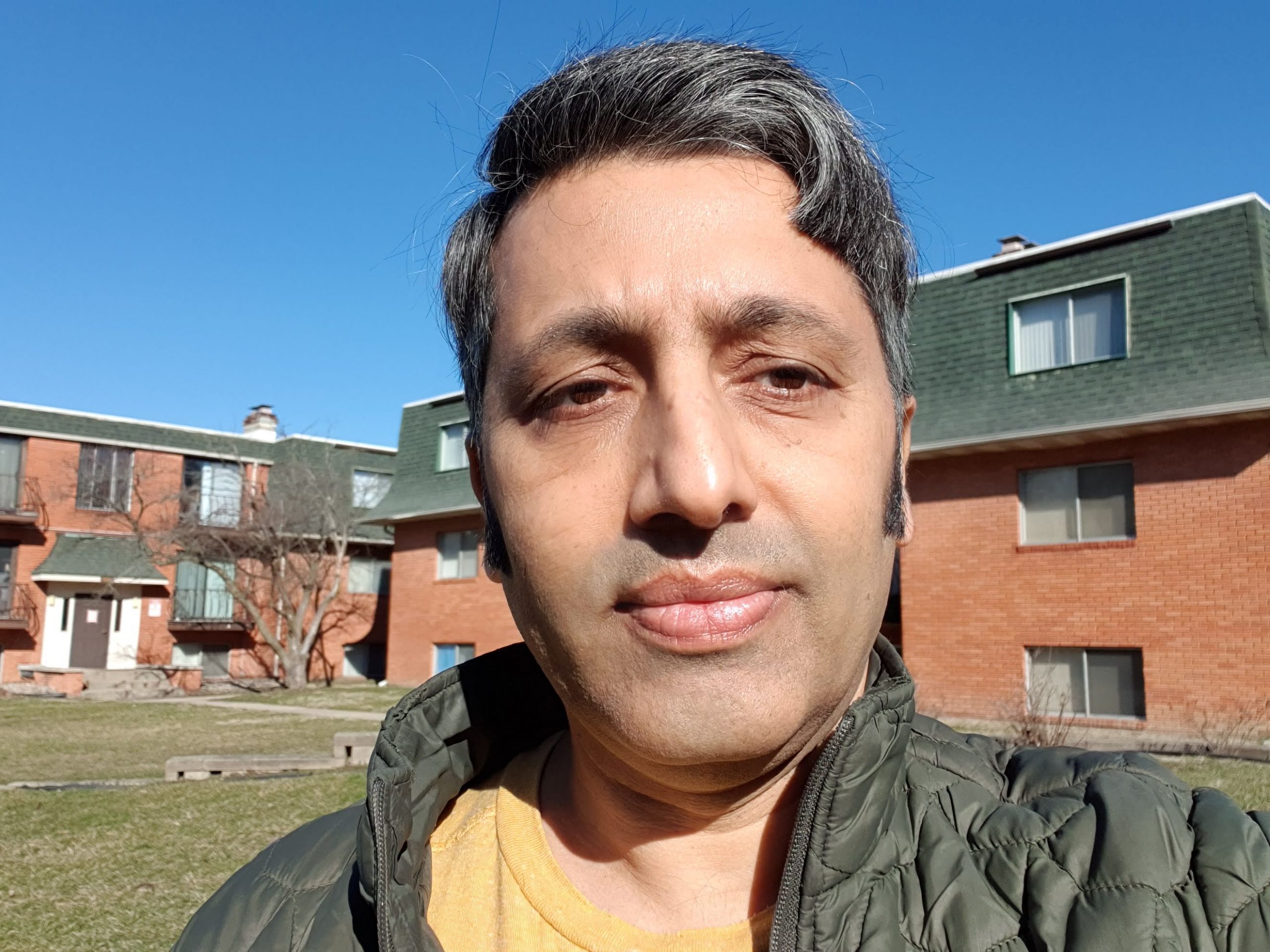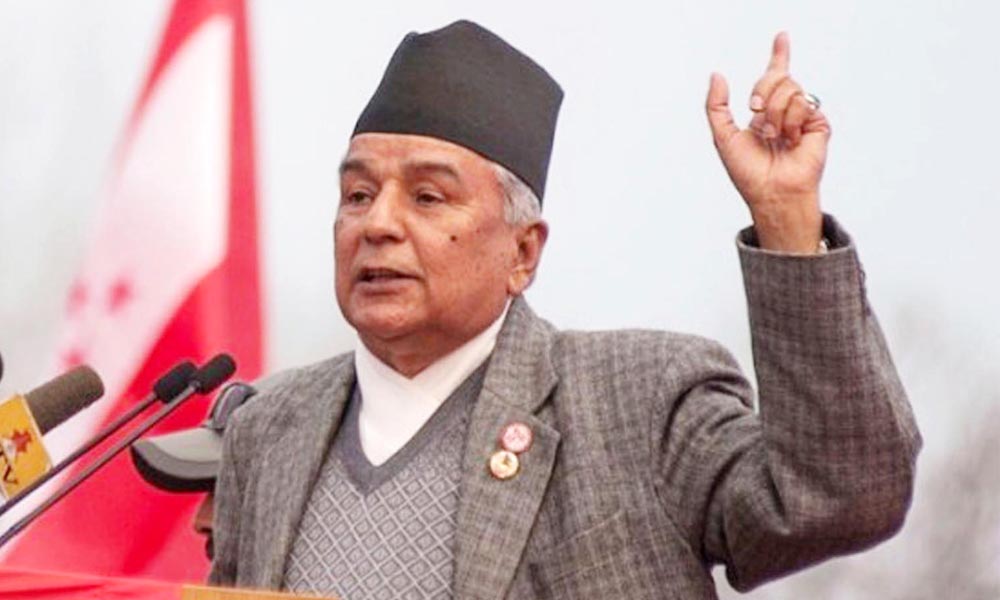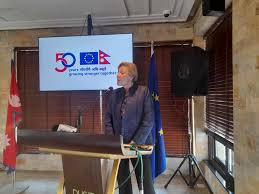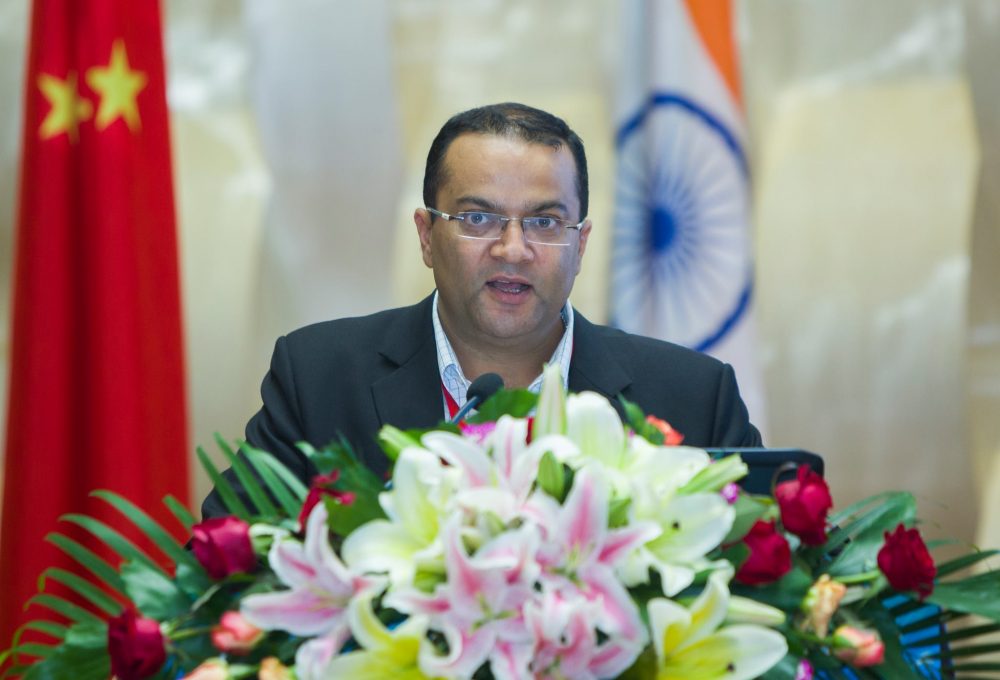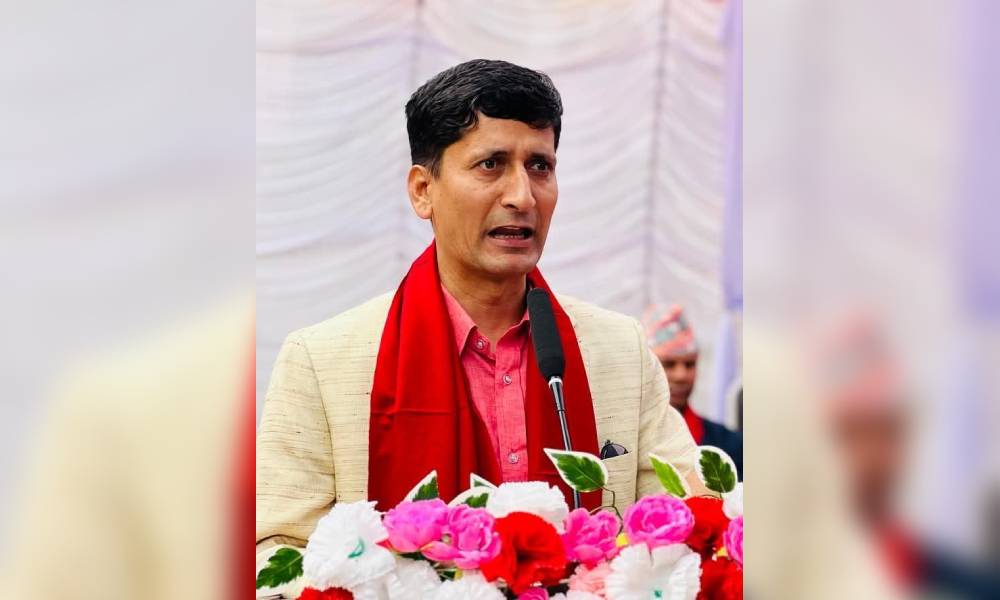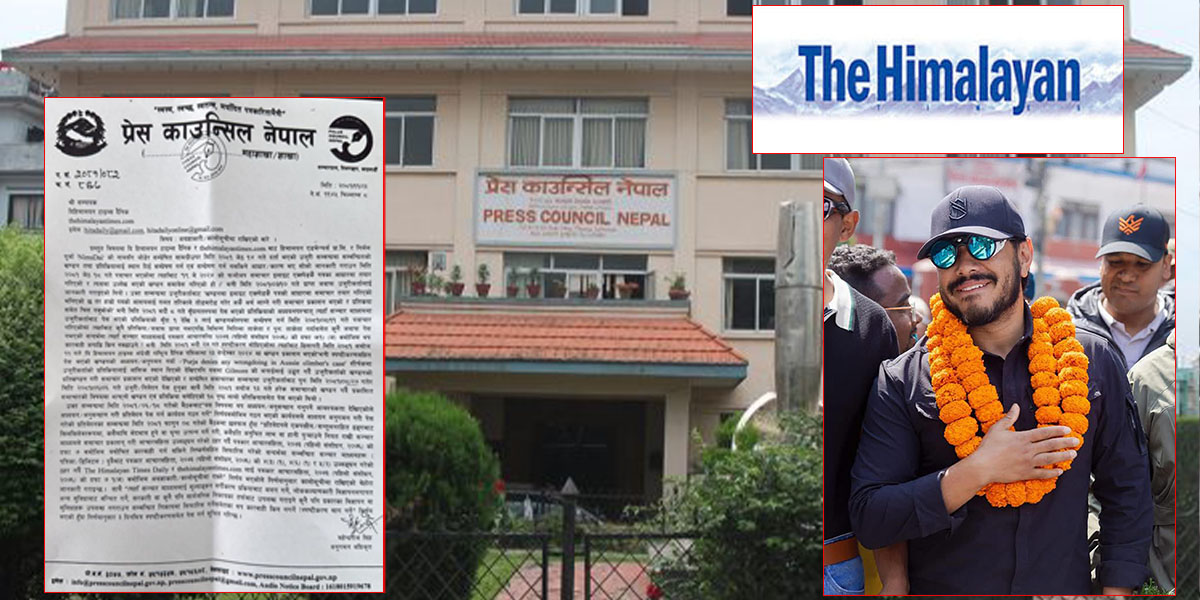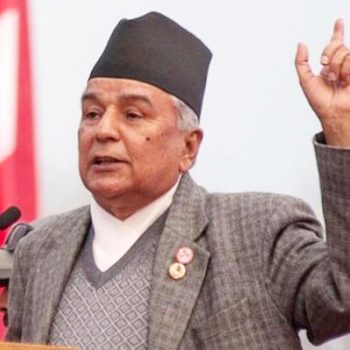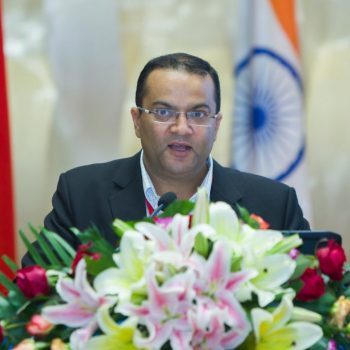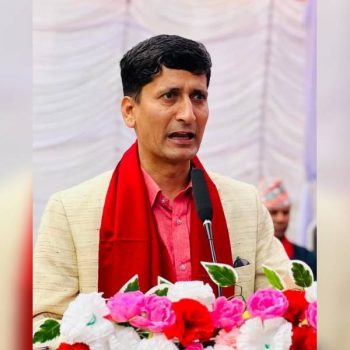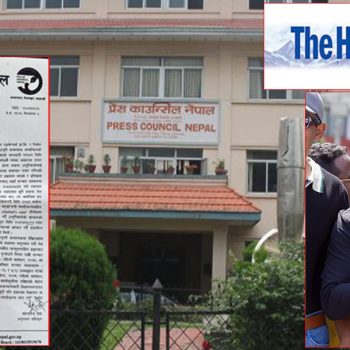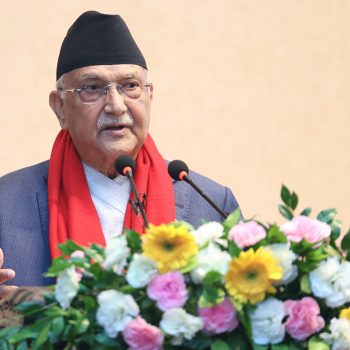Envisioning a sustainable, ecological, and social landscape for people and planet
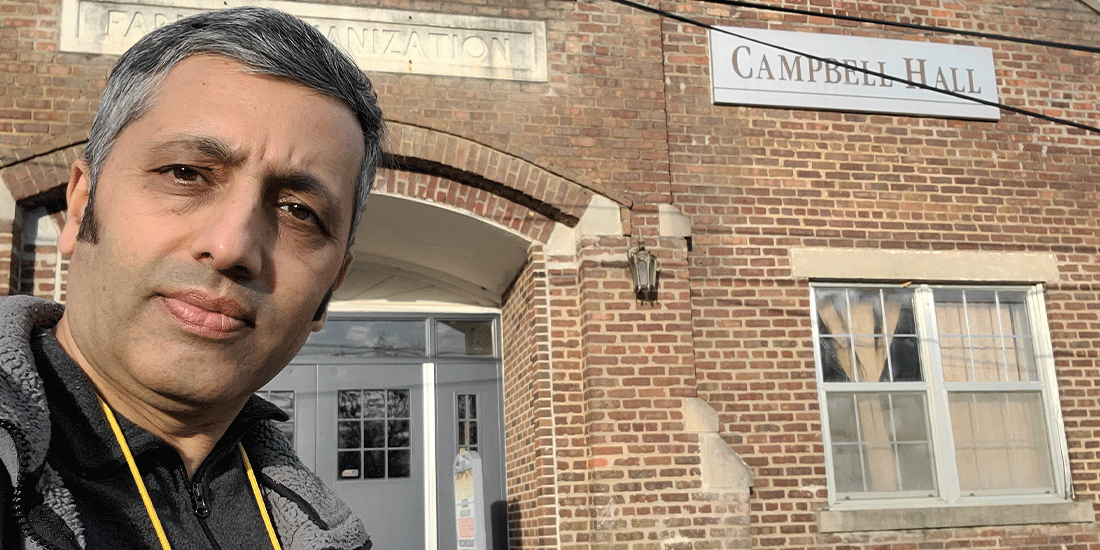
A visionary man with a unique perspective and mission in life: Dr. Suresh Sharma’s pioneering contribution to Nepal’s local and regional planning: A reminiscence of his sustainability efforts and far-sighted vision for Nepal
Dr. Suresh Sharma holds a PhD in Natural Resources and Environmental Sciences from the University of Illinois at Urbana-Champaign, United States. He currently serves in the position of Agroforestry Project Coordinator for Southeast U.S., based in Tuskegee University in Alabama.
In September 2024, Nepal Press interviewed Dr. Suresh Sharma who shared his insights and visions on how to propel Nepalese agriculture towards a more resilient and sustainable path towards self-sufficiency while safeguarding and protecting Nepal’s environmental health and its rich biodiverse landscapes. In February 2025, our Nepal Press team were provided with another opportunity to interview Dr. Sharma on the topic of local and regional development planning in Nepal especially with a major focus on participatory planning efforts, especially since the last three decades starting from the 1990s up until the present times. Nepal Press presents below the main excerpts of our talk with Dr. Sharma.
- You have been spearheading participatory planning in the regional and local development context of Nepal since the last 25 years or more beginning the late 1990s. Could you share your story providing us a brief background of the situation and circumstances back then when decentralized planning was visualized and got initiated as a major leap for Nepal’s development?
In the early 1990s, participatory planning by local development actors through the adoption of a bottom-up and more autonomous decision-making approach has been floating around for some time in public discourse. The idea behind such an approach to development was trending worldwide as this philosophy and concept allows resource allocation, its mobilization and development by harnessing the ideas, needs and aspirations of the grassroots people based on their ecological niche and local context. However, this idea was yet to be fully initiated and spearheaded in the Nepalese context. Up until that time, and earlier, the country remained under monarchial rule under the king and therefore, development efforts and process in Nepal has been following a top-down approach with the government at the center making all major decisions on budgetary allocation for the lower government tiers and administrative wings as well as leading and directing what the regional and local governments units should be doing. Local self-governance was a new concept for Nepal at that time, which is expected as the country has just transitioned from a party-less and unilateral kingdom rule to a more liberal multi-party democratic setup beginning 1990. People’s expectations of democracy were high and the newly formed political leaders and government bureaucracy, which was still holding the vestiges of the feudalistic mindset, were swimming in muddled waters. There were not enough political leaders or thinktanks in the government at that time who had a clear vision, consensus, and roadmap on what scientific basis, local development efforts should be directed and how local resources (both natural and human) should be identified, prioritized, and channelized for optimum utilization, conservation, and sustainability. The most challenging part for the government was to improve people’s livelihoods and reduce poverty by closing the rural-urban divide. This mission needs to be accomplished without jeopardizing the rich Nepalese landscapes with varied topography and climatic niches, the diversity of its cultural history, ethnicity, indigenous knowledge of agrarian communities, while upholding social harmony.
The United Nations Development Program (UNDP) and the Ministry of Local Development representing the then His Majesty’s Government of Nepal had signed an agreement to adopt a planned and scientific approach to local and regional development on a limited scale. As such, the Participatory District Development Program (PDDP) was launched in the mid-nineties as a pilot project in 20 central and western districts out of a total of 75 districts, which was in essence an experiment in the newly established democratic landscape of Nepal. As part of this initiative 20 Program Officers were recruited at the district level with UNDP technical and financial support. The newly recruited officers were stationed in each of the district headquarters popularly known as the Office of the District Development Committee (DDC) or Jilla Bikas Karyalaya. Alongside that, a few regional planners with advisory roles were trained and mobilized to guide in the district and regional planning process. Among one of the 20 Program Officers, I got recruited in Parbat District in mid-1996 leading the Agriculture, Forestry, and Environment unit with a job description that was both exciting and challenging. My responsibilities were mainly focused on leading the way to decentralized planning efforts through participatory planning and grassroots mobilization. At that time, I was in my early 20s with a lot of energy and enthusiasm to alleviate rural poverty, as well as with a vision for sustainable development through sound decision-making especially concerning the conservation, utilization, and management of Nepal’s rich natural resources.
- Could you elaborate further on how decentralized planning efforts were implemented at the local level, especially after the initiation of participatory district development Program (PDDP) and Local Governance Program (LGP)?
The Participatory District Development Program (PDDP) followed by the Local Governance Program (LGP) that got implemented in 40 districts during the Mid-1990s up until December 2002 marked a new era for Nepal’s decentralized planning efforts. Prior to PDDP and LGP interventions, the local planning process in the districts and lower government tiers such as Village Development Committees (VDCs) and Wards were mostly non-existent. The government line agencies at the districts such as the District Agriculture Development Offices, District Livestock Service Centers, District Irrigation Offices among others, were accustomed to receiving the annual programs and budgets earmarked for them to be implemented at the local level from the central government in Kathmandu through their respective ministries. In other words, the government bureaucracy and officials at the center in Singha Durbar, often make major decisions to prioritize development programs and allocate budgets for the lower tier administrative regions and districts, without meaningful people’s participation at the local level. Development planning by design followed a top-down approach of resource allocation for all 75 districts in the country back then.
After the start of PDDP and LGP initiatives, the District Development Committee (DDC) and its office, which merely existed as a district level hub for locally elected officials prior to that period, began to take the central stage for initiating local planning exercise. Four sectoral wings or development units were established in the DDC offices throughout the 20 pilot districts with the name of Agriculture, Forestry and Environment Unit, Social development Unit, Infrastructure development Unit, and finally, Information and communication Unit. The office of the DDC anchored and fortified by its four sectoral units began coordinating with development stakeholders, alongside bridge-building and bringing all the district government line agencies and non-governmental actors together into a unified umbrella, for making the local planning process more contextual, participatory, and people-oriented. Such initiative gained more speed and momentum especially after the enactment of the Local Self Governance Act (LSGA) in 1999. Furthermore, the newly recruited program officers placed in respective DDC offices in various districts started to gain more legitimacy through their active involvement in the local planning process and through social capital building with community members.
The idea of the bottom-up planning process that was initiated at that time and still relevant today, is to begin discussing locally relevant issues and development needs at the Ward and Village Development Committee (VDC) level through involvement of the rural folks and citizens to enhance public participation in government affairs. The priorities and needs of the local people were brought for further brainstorming and discussion by the VDC elected representatives at the Ilaka level planning workshops, as per the newly mandated participatory planning approach. For instance, there were 11 Ilakas and 55 VDCs in Parbat district at that time, and a single Ilaka comprised of an agglomeration of 4-6 VDCs depending on the geographical area and regional landscape. So, altogether, 11 Ilaka level planning workshops were conducted by our team in each annual planning cycle, while we trekked across the different geographical regions of the district. It would take approximately three weeks for our team to complete the Ilaka level planning process. Each Ilaka was an administrative region represented by a locally elected leader chosen by citizens residing within their own administrative jurisdictions after casting their ballots in the nation-wide local level elections. In a similar fashion, each VDC was also represented by an elected VDC chairperson, Vice-chairperson, and 7 other members. Many of the VDCs had their own office buildings at that time, while some were yet to be constructed but maintained their offices in a rented village apartment with administrative duties and functions overseen by a VDC Secretary and a technical assistant. The Local Development Officer (LDO), a government bureaucrat stationed at the DDC office by the Ministry of Local Development, was mandated to oversee the administrative and financial functions of DDC while backstopping the program officers and district line agencies as needed.
At the Ilaka level planning workshops, the demands and aspirations of the people as brought by their respective VDC chairpersons and Ilaka representatives were discussed in the presence of DDC program officers, alongside officials from the district level government line agencies and representatives from non-governmental organizations (NGOs), and community-based organizations (CBOs) operating in the district. At the end of the discussion, each VDC ends up filling up a program/projects demand form mentioning their prioritized plans and activities for the upcoming fiscal year, which were then collected by the program officers from the DDC to take it to the next step of the planning cycle and process. The demand forms collected from the Ilaka level planning workshops were then prioritized further for their technical feasibility and budgetary requirements at the sectoral committee meetings at the district headquarters before forwarding to the DDC body to incorporate in the District Annual Plan. Once endorsed from the district council annual event meeting, the District Annual Plan would then go to the National Planning Commission office in Kathmandu to be included in the government red book for implementation support with budgetary provisions. In a nutshell, that’s how the participatory planning process took initiation about two and half decades ago, more specifically at the local and district level with the initiative of the PDDP and LGP interventions.
- What major constraints and bottlenecks have you experienced in implementing your mission and programs toward participatory planning efforts at the local level? How did you overcome some of those challenges?
One of the main barriers that I remember during our efforts towards transitioning to a decentralized and participatory planning process at the local level was the reluctance of the then bureaucratic machinery to embrace change, while they stick to their old ways of doing things. The feudalistic mindset of the whole bureaucratic apparatus was very palpable at that time. That made innovative ideas and concepts less appreciated for their usefulness to be incorporated into the participatory planning exercise and process. For instance, when I first began developing planning maps to layout the general topography, climatic zones, classify VDCs based on their land capability and inherent soil structure using the baseline maps from the Land Resouce Mapping Project, as well as applied primacy index in ranking VDCs based on their development budget flow, it was quite challenging at first to convince higher government authorities and local leaders conceptualize and understand the real value behind such an approach. Later, when I developed the land suitability, development potential, and development restriction maps of the district based on those earlier created maps and information gathered during the field visits combined with data analysis, then it was a big “ah ha” moment for them. As I started to convince the government authorities and local leaders that adopting such a scientific approach to local level planning would help them, both in the short and long-term, to make rational choices while minimizing costs and optimizing available resources, then everybody starts to buy my idea with applause and endorsement.
The DDC office of Parbat later prepared its District Profile where I and my team were able to incorporate analytical information using well-developed maps, charts, tables and diagrams with prioritized programs and budgets for all the four development sectors in the district that garnered high level attention and commendation even from the National planning commission and PDDP headquarters in Kathmandu. During my tenure of 2 years and 7 months in Parbat DDC, I was also able to develop the Agricultural sector Analysis report of the district packed with useful planning maps and vital information, which was later disseminated to 39 other districts by PDDP and LGP partners including regional planners, as a benchmark to be used for planning purpose for other districts to follow suit. That was a big moment for me and our team since Parbat district and especially our DDC office gained a lot of limelight at the national level. DDC Parbat was seen by others as role model by embarking a significant step for initiating a new benchmark toward scientific planning process through the adoption of planning tools and participatory approach in the Nepalese context.
There were other challenges and development hurdles at that time as well that posed a serious hindrance in our efforts to upscale the participatory planning exercise and lessons learned to other remote parts of the district and elsewhere in Nepal. Some of the main challenges encountered that I remember were the inadequate awareness of the local people regarding participatory planning approaches and their hesitation to organize and engage in formal settings to openly voice their issues and concerns.
The other challenge was related to the power dynamics and social structure in rural hinterlands that tend to undermine the voices of the marginalized people in favor of local elites or influential groups that often weaken participatory deliberations and decision outcomes. Aside from that, I also felt poor communication, coordination and information flow both at horizontal and vertical levels, but more readily noticeable among the sectoral line agencies and ministries, that further complicated the already existing bureaucratic red tape. This problem was coupled with inefficient record keeping in government institutions causing significant delays in moving the paperwork necessary for making timely decisions. Simultaneously, during that period, there was a lurking insurgency of the Maoist rebel groups gaining increased momentum in the villages and rural areas that made safe travel to those regions very difficult and sometimes even life threatening for government staff, planners, and development workers. The rising insurgency led by the Maoist movement further created a fearful work environment for officials in the government and private sector to engage with rural communities. It also created a precarious situation for common citizens who were mostly found worried about the uncertainty of the political and economic landscape that was unfolding for them. We were somehow able to navigate and overcome some of these challenges by building trust and useful communication channels with the local villagers, beneficiary groups, and people in our network through enhancing social capital and lending transparency through our work ethics and social demeanor.

- Nepal have ushered into a provincial government set up in recent years especially after the country has transitioned into a republic state from its earlier phase of having a multi-party democracy overseen by a constitutional monarchy rule. What challenges do you foresee for Nepal to institutionalize a participatory planning framework at the local level given the reshuffling of provincial and administrative boundaries including bureaucratic reorganization in recent years?
Participatory planning needs a long-term vision with good intention of political leaders and bureaucracy for enhancing community and societal wellbeing. Being a small landlocked country with diverse topography, ethnicity, and developmental needs, a one-size- fits-all policy may not bear the desired outcome in Nepalese context. As such, the participatory planning process should be fine-tuned based on cultural diversity of its people, agro-climatic landscape, availability of opportunities and constraints, including the socio-economic needs and aspirations of the local populace.
Nepal’s state restructuring following the federal setup led to a series of constitutional amendments in the past to fit people’s concerns and needs, which can be viewed and reflected as one form of participatory democratic exercise. Nevertheless, the established three government tiers – federal, provincial, and local under the current setup are still confronted with jurisdictional overlap when it comes to clarifying their roles and responsibilities, including the use of devolved powers, and putting appropriate polices into action for maximizing societal benefits. Nepal’s planning cycle is still fraught with making ad hoc and last-minute bureaucratic decisions for prioritizing budgetary resources and implementation of projects without a long-term vision and meaningful people’s participation. This has led to duplication of efforts time and again in addition to poor quality of infrastructure works and waste of valuable resources including inefficient utilization of people’s hard-earned tax money. There have been instances in the past where questionable contractual agreements were made by higher authorities in the government with third parties bearing dubious backgrounds. This situation has raised a big question about the need to further solidify citizens’ involvement in the planning and decision-making process.
The reshaping of geographical boundaries following the federal structure and administrative makeover after the establishment of provincial and local governments have added further complexity without changing the inherent social structure and working dynamics of Nepalese bureaucracy. Although such a change is welcome and in line with the republic mandate endorsed by the major political parties, however meaningful changes in people’s livelihoods and economic wellbeing following this cosmetic shift are yet to be witnessed. After provincial and local level restructuring, the bureaucracy has been bloated with additional manpower to deliver local level services for people. Contrarily, this has also resulted in added financial load and tax burden on the local citizenry, as well as shrinkage in the already stretched government treasury. Therefore, opportunities need to be created within the country for engaging younger generations, unemployed people and disadvantaged groups in economic activities especially in areas focused on natural resource management, agriculture, forestry, clean energy, small-scale cottage industries, green tourism, and conservation related programs. Such initiatives if taken seriously by the local and provincial governments could create wealth and prosperity for people without depleting natural resources and the environment, while helping the local economy to revive and thrive.
I foresee that Nepal needs a strong leadership both at the political level and government bureaucracy all along the different government tiers to establish a pluralistic and more inclusive people’s participation. With majority of young people leaving the country in recent decades to seek green pastures, due to lack of job and employment opportunities within the country, the government leadership needs to forge a strong participatory base at the local level by retaining qualified manpower who still want to serve and contribute to Nepal’s development if they were provided the opportunity to innovate, invest, and succeed within the country. However, given the volatile political landscape since the past few decades and lack of citizens trust in political and bureaucratic leadership it’s an uphill task at this stage to embrace a meaningful local level participation in nation building. Therefore, the past development trends portray a good picture that Nepal will likely face immense challenges to meet people’s expectations in the coming years ahead.
- What are your suggestions and recommendations for making decentralized planning efforts in Nepal more people-centered and effective in meeting the needs and aspirations of its citizenry?
Inclusive participation and representing the voices, needs and concerns of the disadvantaged and underprivileged class of Nepalese society should be the primary focus of any government body or organization mandated with decentralized governance responsibilities. This requirement should be the minimum benchmark of any pragmatic participatory planning exercise to gain its stronghold in public discourse and win popular respect and grassroots support.
Furthermore, participatory planning could lose its intended purpose when responsible authorities are not held accountable for their decisions that could leave an impact on the larger society. The presence of a strong and well-informed civil society is therefore a must for participatory planning to achieve sustainable outcomes both from the perspective of the country’s socio-economic and environmental standpoint. The role of independent media for raising needed awareness and informing the local citizenry about the pros and cons of development projects and decisions without fear or intimidation, is another pillar of democratic governance and for strengthening local level participation. The lessons and mistakes learned in the past during the participatory planning exercise should be a guide for bureaucrats and political decision-makers in forging a viable trajectory for the future.


